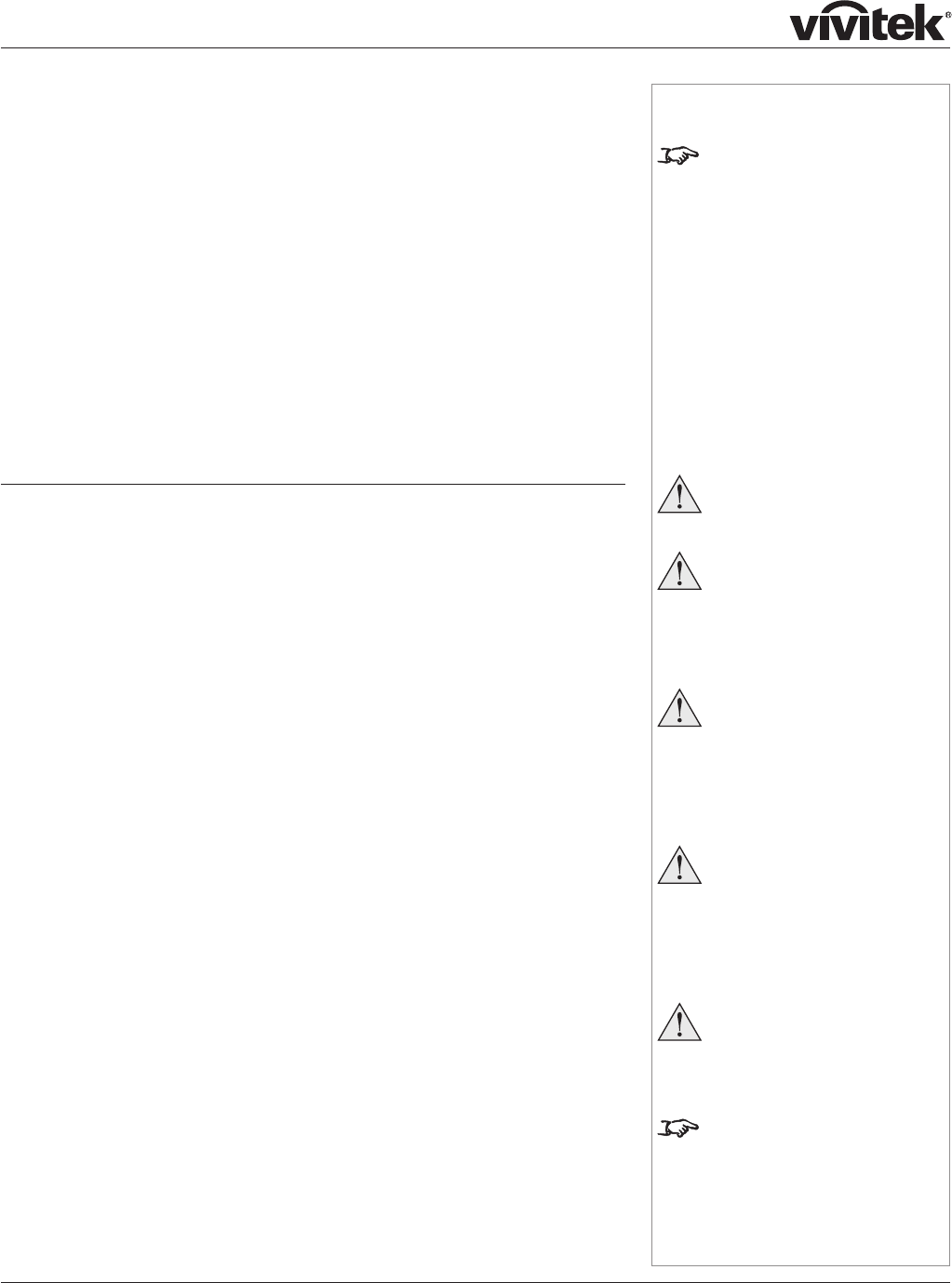
Page 2.12
Notes
For more detailed information
about using the menus, see
section 4. Controlling the
projector.
Do not try to stack more than
three projectors.
When stacking projectors,
the stack MUST be vertical, to
ensure that the stresses are
distributed to all four chassis
corners.
Make sure that the surface,
ceiling or rigging that is
to support the projector is
capable of supporting the
combined weight of all the
projectors.
Do not place heavy objects
on top of the projector
chassis. Only the chassis
corners are capable of
withstanding the weight of
another projector.
Backup safety chains or
wires should always be
used with ceiling mount
installations.
,IWKHSURMHFWRULV¿WWHGZLWKWKH
¿[HGOHQVWKHQWKHUHDUH
no mechanical controls for lens
shift.
Stacking projectors
The projector is capable of supporting the weight of up to three other projectors
safely. The stack should be positioned vertically and perpendicular to the screen,
and the lens shift controls used to align the image with the screen, to maintain a
geometrically correct image.
Carefully lower each projector down onto the top of the others, making sure that
they are vertically aligned with each other, and protected from becoming pushed
over.
Align the images from the projectors, using the Lens shift controls on the top of
the projector.
Ɣ
Ɣ
Rear projection
To use rear projection, set Rear Projection to On, in the System menu, to reverse
the image.
In rear-screen applications where space behind the projector is limited, a mirror may
be used to fold the optical path. The position of the projector and mirror must be
accurately set. If you are considering this type of installation, contact your dealer for
assistance


















